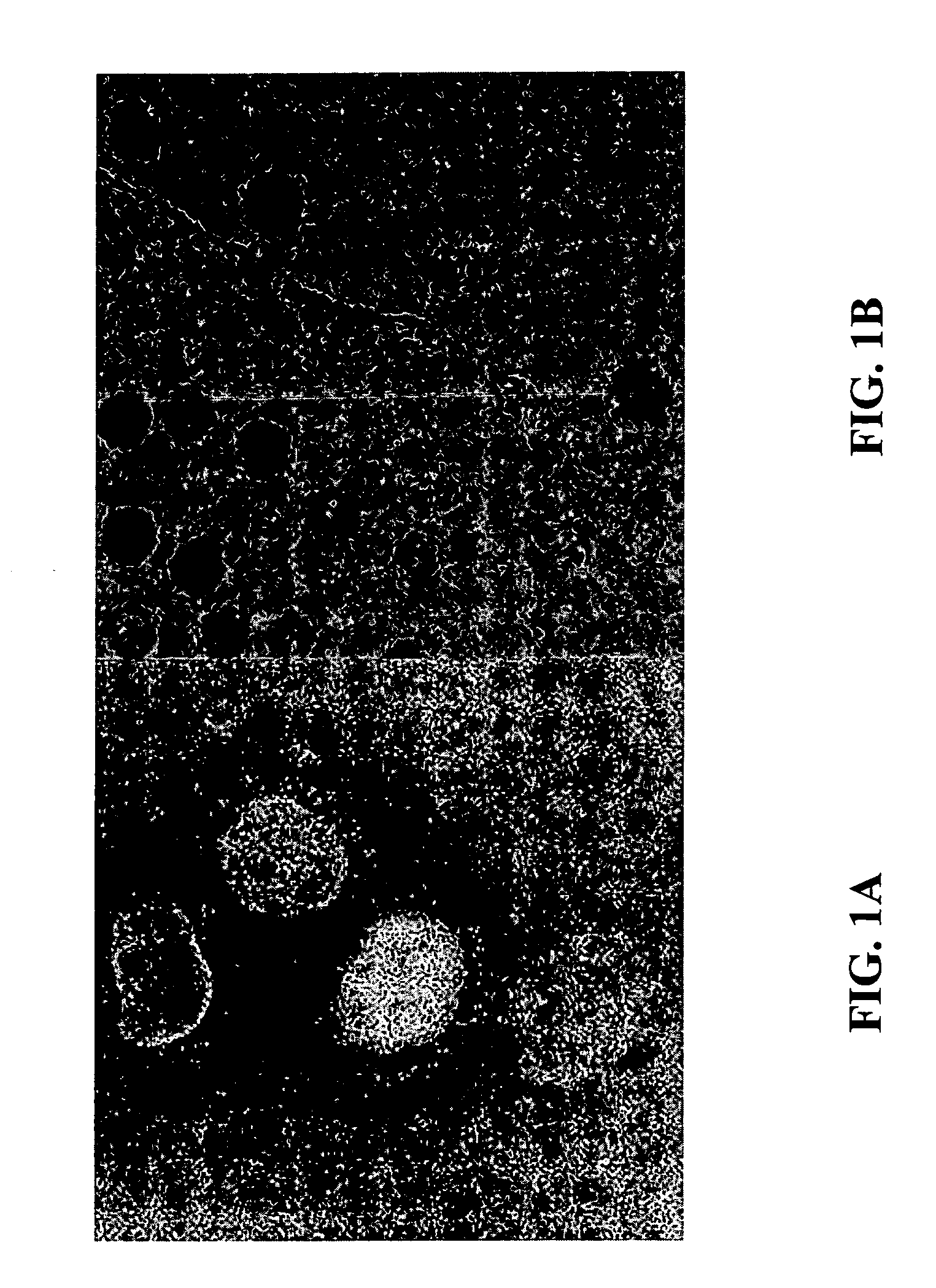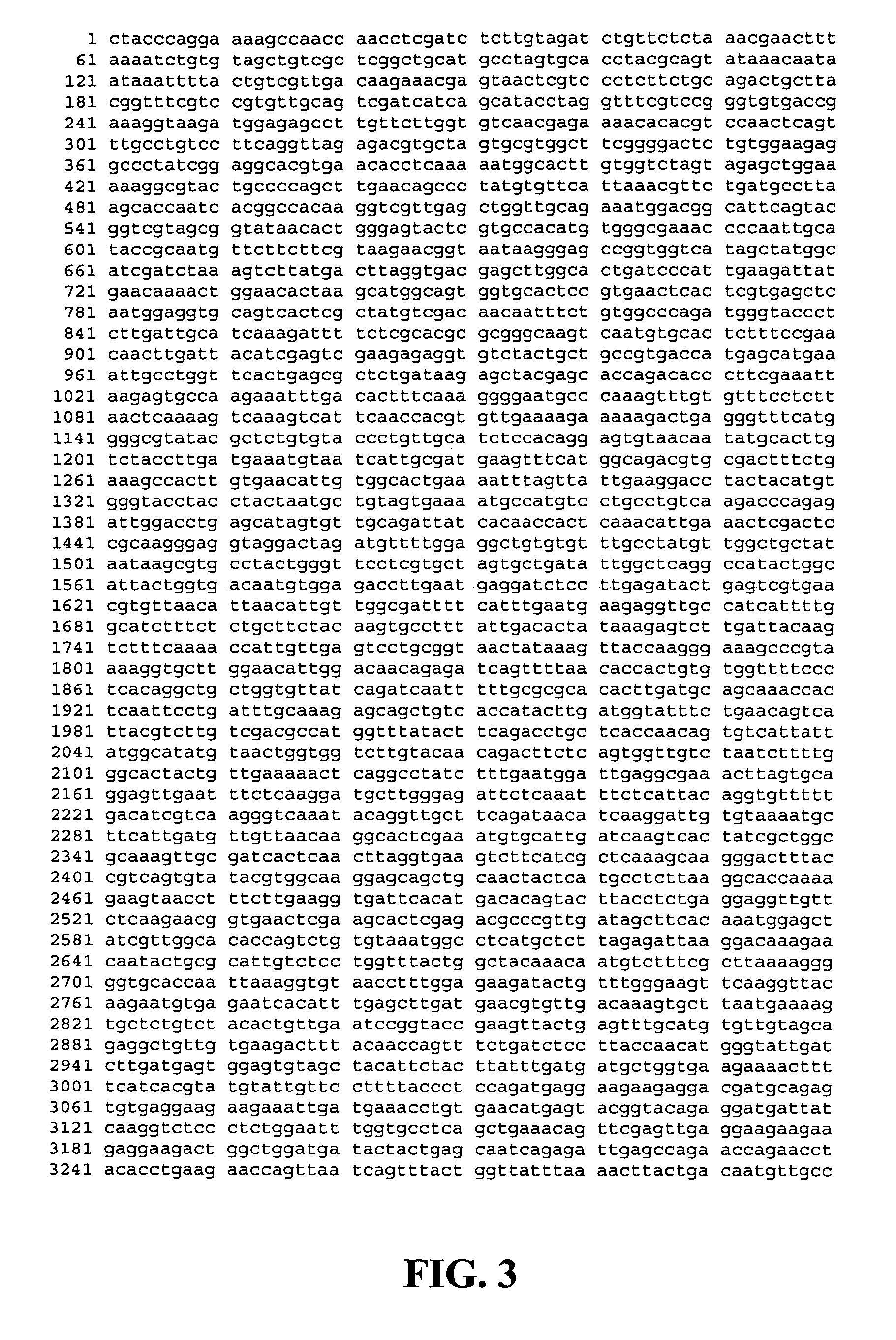Isolation and characterization of the precursor virus of human sars virus: sars-associated corona virus-like virus
a precursor virus and human sars virus technology, applied in the field of isolation and characterization of the precursor virus of human sars virus : sars-associated corona viruslike virus, can solve the problems of pneumonia among patients
- Summary
- Abstract
- Description
- Claims
- Application Information
AI Technical Summary
Benefits of technology
Problems solved by technology
Method used
Image
Examples
Embodiment Construction
[0031]Severe acute respiratory syndrome (SARS) is a recently emerged human disease associated with pneumonia. This disease was first recognized in Guangdong Province, China in November 2002. Subsequent to its introduction to Hong Kong in mid February 2003, the virus spread to more than 28 countries causing disease in over 7,900 patients across 5 continents. The disease is unusual in its predilection to affect health care workers. A novel coronavirus (SCoV) was identified as the etiological agent of SARS (Peiris et al., 2003, Lancet 361:1319; Ksiazek et al., 2003, N. Engl. J. Med 348:1953) and the virus causes a similar disease in cynomolgous macaques. Fouchier et al., 2003, Nature 423:240. While the majority of patients with SARS seroconvert to SCoV, patients with other respiratory disease and healthy blood donors had no detectable antibody. Peiris et al., 2003, Lancet 361:1319; Zhong et al., 2003, Lancet 362:1353). These results suggest that the human SCoV is an animal virus that c...
PUM
| Property | Measurement | Unit |
|---|---|---|
| Length | aaaaa | aaaaa |
Abstract
Description
Claims
Application Information
 Login to View More
Login to View More - R&D
- Intellectual Property
- Life Sciences
- Materials
- Tech Scout
- Unparalleled Data Quality
- Higher Quality Content
- 60% Fewer Hallucinations
Browse by: Latest US Patents, China's latest patents, Technical Efficacy Thesaurus, Application Domain, Technology Topic, Popular Technical Reports.
© 2025 PatSnap. All rights reserved.Legal|Privacy policy|Modern Slavery Act Transparency Statement|Sitemap|About US| Contact US: help@patsnap.com



